This week Voltaic helped install a solar powered dissolved oxygen monitor built by HabitatMap at the Living Dock in Newtown Creek. Newtown Creek is a Superfund site that borders Brooklyn and Queens. A once ecologically thriving waterway, the creek was heavily polluted by oil spills, distilleries, tanning plants, canneries and other manufacturing facilities. To turn back that tide, the Newtown Creek Alliance is working to “restore, reveal and revitalize” Newtown Creek.
The livestream of the dissolved oxygen data here.
By tracking and publishing dissolved oxygen levels, everyone can see how the creek is faring. The WaterSense Instrument is located near a combined sewer overflow (CSO) outfall, one of approximately 400 in New York Harbor that discharge untreated sewage every time it rains. When it rains, the city’s 14 treatment plants rapidly reach capacity and begin shunting sewage into local waterways via the closest CSO outfall. These CSO events feed algae blooms that feed bacteria that consume most of the oxygen in the water. When dissolved oxygen levels in the creek are low, marine life has a hard time surviving.
Water Monitoring System Setup
HabitatMap uses a Vernier dissolved oxygen probe which is placed underneath the dock.
A 9 Watt, 6 Volt solar panel is mounted on the edge of the dock facing roughly South. It powers our V44 battery pack, an Arduino microcontroller and a Sparkfun cellular board.
The readout from the sensor is published in real time to the web.
Impact of a Cleaner Creek
Long term, the Alliance hopes to “utilize native species of plants and animals to help clean the fouled waters. Marine plant life and bivalves like mussels, oysters and clams can help filter the water of excessive nutrients and bacteria.” The Living Dock serves as a platform to educate the community about the health of the creek and a real-life lab to demonstrate that these plants can thrive.
Here are marine plants emerging from the winter in the creek.
And modified reefs made of oyster shells and rope can provide a habitat for mussels, shrimp, fish and crabs. We saw a number of tiny creatures in the dock.
To learn more about our solutions to use solar power to keep sensors running in remote locations, go to our Solar System for IoT page.

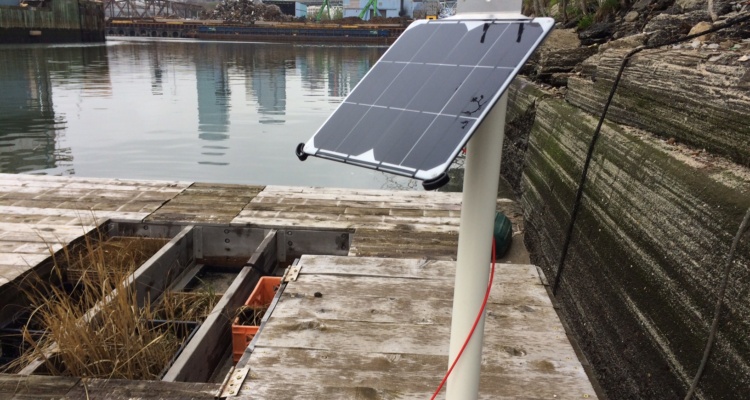
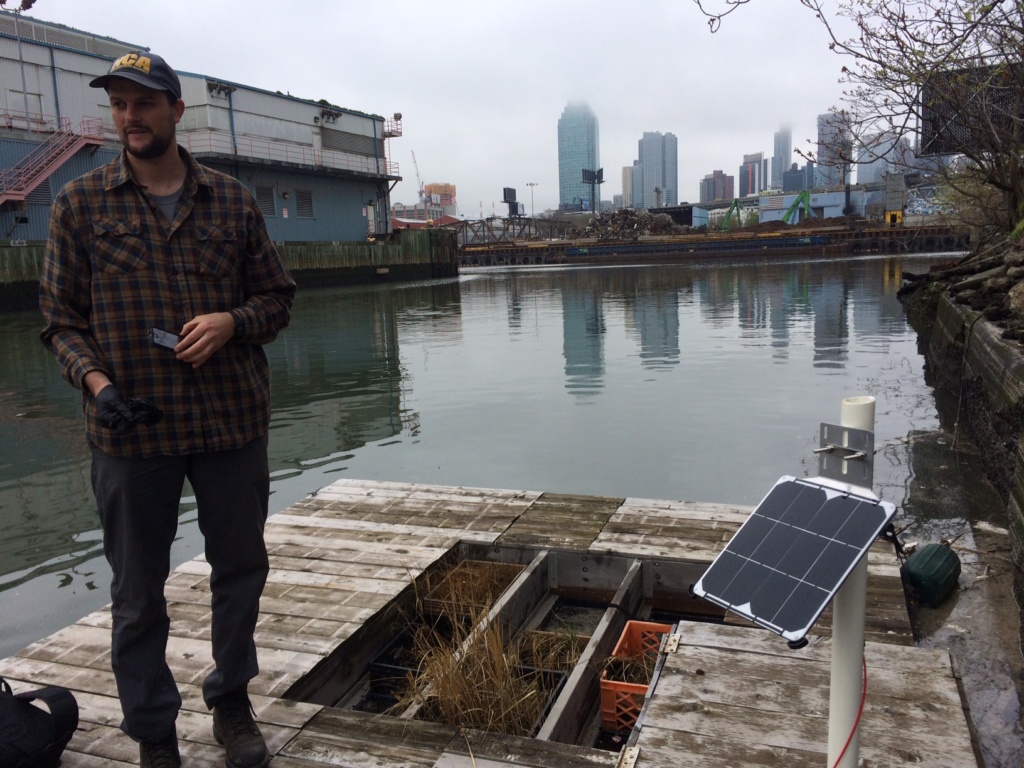
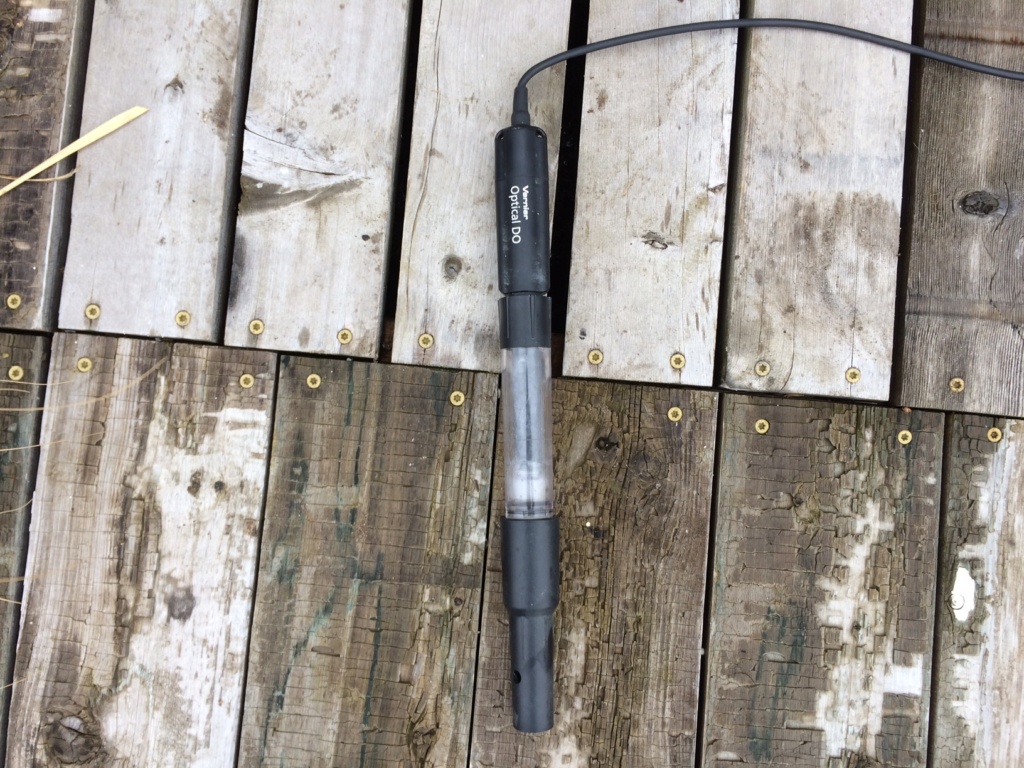

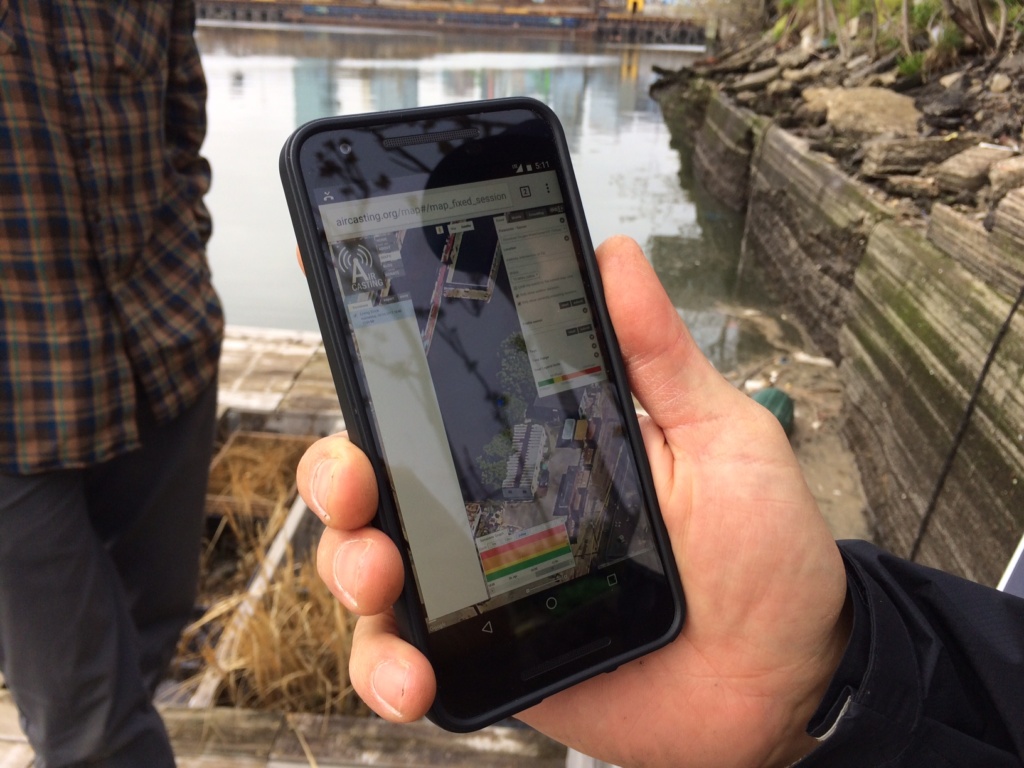

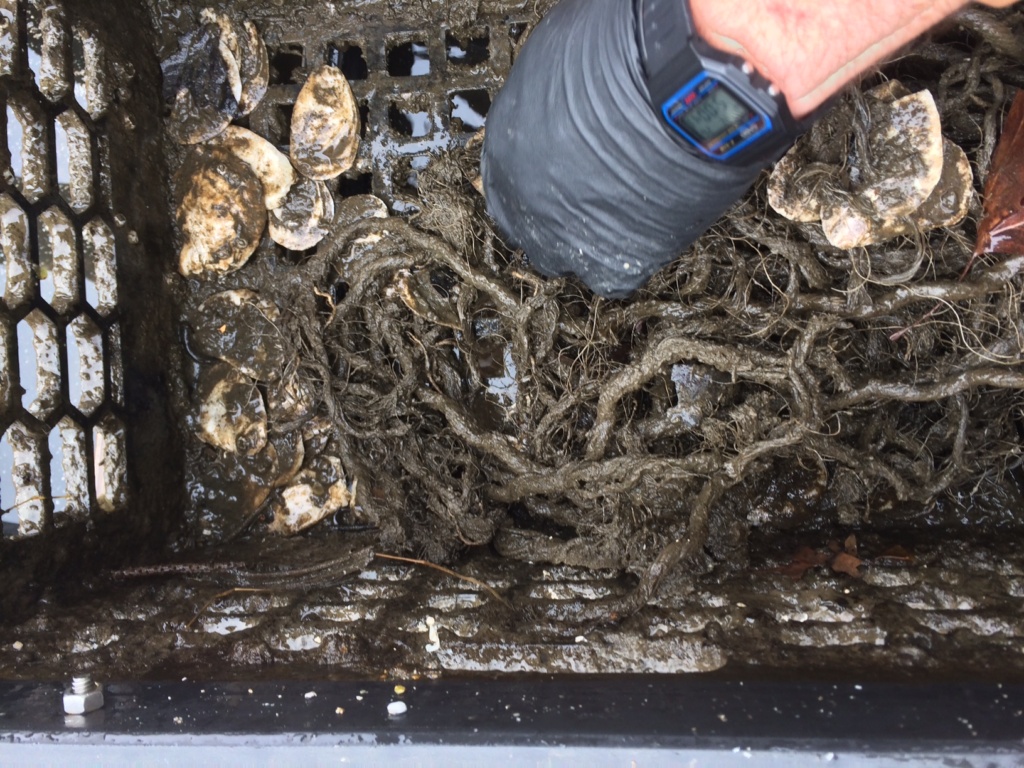
Leave a Reply